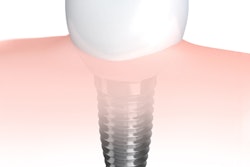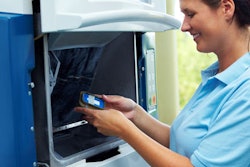
Knowing how likely CAD/CAM materials are to fracture can help direct treatment planning. A new study put seven such materials through a stress test to see how they responded, and the researchers presented their findings at the recent 2018 International Association of Dental Research (IADR) meeting in London.
The researchers wanted to see how the materials faired in a fatigue test as a way of predicting the likelihood of fracture. Lithium-based glass-ceramic materials were more susceptible to slow crack growth than other materials, they reported.
"Susceptibility to slow crack growth under cyclic loading was observed for all materials, being more severe ... in lithium-based glass-ceramics and Vitablocs Mark II," the researchers wrote in their study abstract.
The study was led by Renan Belli, PhD, an associate scientist at the Laboratory for Dental Biomaterials Research at the dental clinic of the University Hospital Erlangen at the University of Erlangen-Nuremberg in Germany.
The researchers tested seven CAD/CAM materials:
“Susceptibility to slow crack growth under cyclic loading was observed for all materials.”
- Vitablocs Mark II (Vita), a feldspar ceramic material
- IPS e.max CAD (Ivoclar Vivadent), a lithium disilicate-based glass-matrix ceramic material
- Vita Suprinity PC (Vita), a zirconia-reinforced lithium silicate glass-ceramic material
- Celtra Duo (Dentsply Sirona), a zirconia-reinforced lithium silicate ceramic material
- IPS Empress CAD (Ivoclar Vivadent), a leucite-based glass-matrix ceramic material
- Enamic (Vita), a hybrid ceramic material
- Lava Ultimate (3M), a nanoresin ceramic material
The researchers prepared 30 rectangular plates with highly polished surfaces. They fatigue tested the plates in water until the materials fractured and determined a threshold stress intensity factor using the testing data.
All the materials were susceptible to slow crack growth under cyclic loading, but this growth was more severe in the lithium-based glass-ceramics and Vitablocs Mark II, the researchers reported.
Threshold stress intensity factors, representing the onset of slow crack growth, were estimated to lie in the range of 37% to 44% for the lithium-based glass-ceramics and Vitablocs Mark II and between 51% and 59% for the other materials.
Based on these results, the researchers predicted that the lithium-based glass-ceramics and Vitablocs Mark II materials would suffer strength degradations of between 40% and 60% after only one year of service.



















